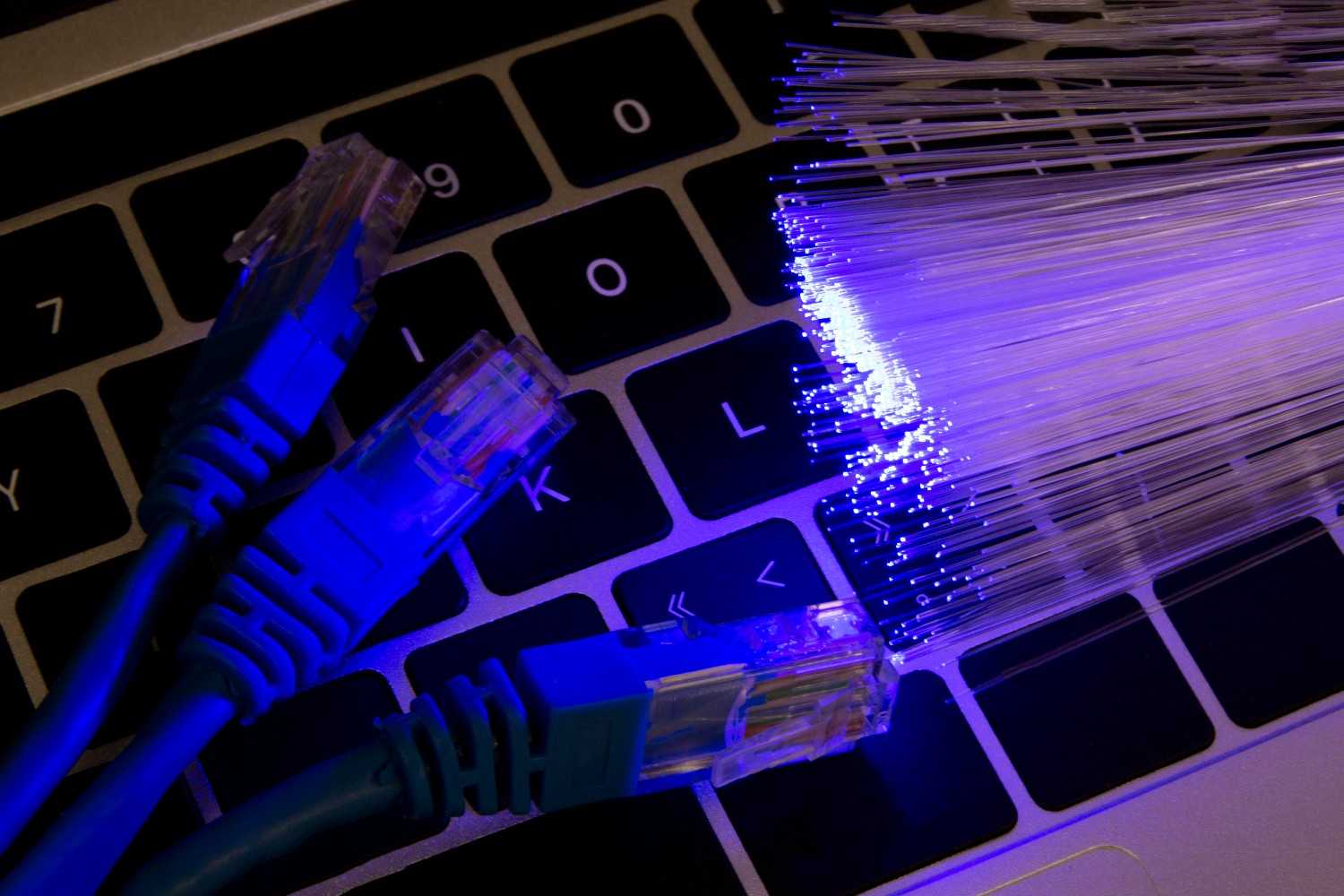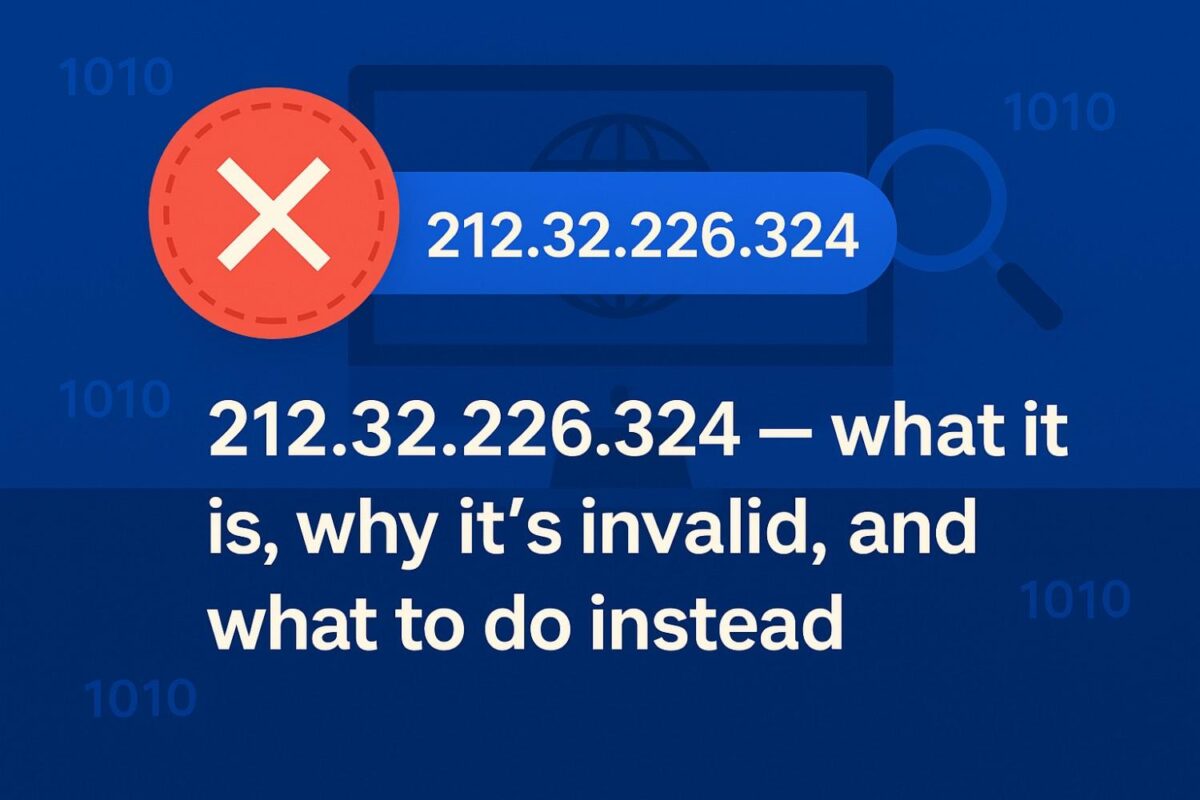If you searched 212.32.226.324, you’re probably trying to trace an IP address, check reputation, or troubleshoot a connection. Here’s the quick answer: 212.32.226.324 is not a valid IPv4 address because the last number (“octet”) is outside the allowed range. Below, I’ll show you how to fix the typo, find the likely correct address, and run safe lookups like a pro—all in a clean, skimmable guide designed to match what top-ranking IP-lookup posts do best: give a fast verdict, provide clear steps, and cite trustworthy sources.
Is 212.32.226.324 a valid IP address?
No. An IPv4 address uses four decimal numbers separated by dots, and each number must be 0–255. Any octet above 255 makes the address invalid, so “.324” can’t exist in IPv4.
Why this matters: Many searchers land on invalid IPs due to typos, copy/paste errors, or autogenerated strings from shady download pages. Treat them as red flags until you verify the correct value. (Yes, pages do exist that stuff “212.32.226.324” into headlines to bait clicks—ignore those.)

What did you probably mean instead?
When a query ends with .324, the usual intent is the same first three octets with the last one somewhere between .0 and .255—for example, 212.32.226.[0–255]. That /24 block is a real public range; various lookup directories show 212.32.226.* as routable space used by hosting/data-center providers (often geolocated to the Netherlands). Use a specific host in that range (e.g., 212.32.226.34 or 212.32.226.200) to run checks.
Tip: If you’re pulling from logs, re-open the raw record and confirm the octet. Some exporters truncate or misrender digits.
How to verify a valid address in that range (safely)
- Syntax check (fast sanity test).
Confirm all four octets are 0–255. If any octet exceeds 255, it’s invalid IPv4—full stop.
- Reputation and abuse history.
Once you have a valid target (e.g., 212.32.226.34), run it through AbuseIPDB to see reports, country, ISP/hosting, and recency of abusive activity. This is the same tool many security teams and SOAR playbooks integrate.
- Context clues.
If the IP sits in a hosting/DC block, treat unsolicited traffic (port scans, brute force) as higher risk than consumer broadband. Pair the IP check with server logs, headers, and geolocation to decide on blocks or rate limits.
212.32.226.324 vs. valid vs. “edge” cases—what’s the difference?
- Flatly invalid: Any octet >255 (like .324) can’t be IPv4—discard or correct it.
- Valid but special: Addresses ending in .0 or .255 are often network/broadcast in many subnets, but not always; in some masks they can be usable hosts. Don’t judge by the last octet alone—subnet mask matters.
- Reserved ranges: Private (e.g., 10.0.0.0/8), loopback (127.0.0.0/8), and other special-use blocks are documented; they’ll behave differently on the public internet.

Step-by-step: turn a bad IP into a clean investigation
- Confirm the octet. Go back to the source (SIEM, firewall, email header) and re-check for OCR/export errors.
- Normalize the address. Try the nearby candidates (212.32.226.24, .34, .124, etc.) that keep the first three octets.
- Run AbuseIPDB. Check reputation, recent reports, and usage type (hosting vs. residential). Automate via API if you handle volume.
- Decide the action. Block, rate-limit, or allow—based on confirmed evidence, not just a hunch.
FAQs about 212.32.226.324 (and close lookups)
1. Is 212.32.226.324 dangerous or malicious?
It’s not even a valid IPv4 address, so you can’t ascribe behavior to it. Treat the appearance of 212.32.226.324 as a data-quality problem and locate the correct IP before you take action. Then check reputation on the valid value.
2. Can an IP ever end with .324?
No, not in IPv4. Each of the four numbers must be 0–255. Anything above 255 is out of range. (IPv6 looks different entirely—alphanumeric hex blocks separated by colons.)
3. What tool should I use to evaluate a corrected IP like 212.32.226.34?
Start with AbuseIPDB for abuse history and metadata; many security guides and platforms integrate it. You can script lookups with its API for scale.
4. I’ve heard .255 addresses are always unusable. True?
Not always. Whether .255 is usable depends on the subnet mask. In many common /24 networks it’s the broadcast address (not a host), but in other masks a host ending in .255 can be valid. Check the mask before deciding.
Closing thoughts: get the octet right, then investigate smart
Searching for 212.32.226.324 usually means you’re tracing an event—but because that string breaks IPv4 rules, your first job is to fix the typo and confirm a real host (0–255 only). Once you have a proper address in the 212.32.226.[0–255] range, run a reputation check, note the usage type (often hosting/DC for that /24), and act based on evidence, not assumptions. That’s how you turn a noisy, invalid indicator into a clean, defensible decision.

